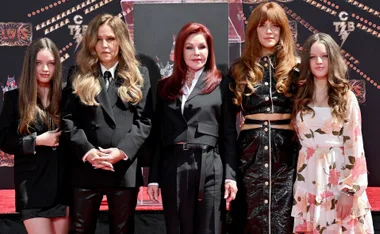Fences keep out next door’s dog and give us privacy, but they can be beautiful too. Gardening expert Jackie French tells you how to make your fence a feature of your backyard.
The flower-covered fence:
My dream fence is covered in mandevilla, with is shiny green leaves and white flowers with what is possibly the world’s most glorious scent. Mandevilla won’t take heavy frosts though, so I have to make do with tangles of roses, especially my beloved thornless white and yellow Banksia roses, the earliest roses to bloom each spring here, and wisteria, which needs a VERY sturdy fence or otherwise it will collapse it under the sheer mass of vine.
In big, frost-free gardens bougainvillea can look stunning. Beauties for most climates include clematis, wonga vines, Chinese jasmine, Solanum spp (in either white or blue-mauve), some of the better-behaved honeysuckles.
Cobaea scandens (cup-and-saucer vine) or Snail vine (Vigna caracalla) are both old-fashioned, fragrant flowering vines that will clothe a fence in a year or two but will be cut by heavy frosts although they will shoot again once the weather warms. Basically head to the garden centre and ask what vines they recommend to bloom best in your area.
If you find time to plant annuals, try sweet peas — a fence full of sweet peas is one of life’s luxuries. Everyone should have at least one season in their life that is rich in sweet peas, with their subtle stunning scent, pastel colours and old-fashioned charm and good vase life. It’s a pity that something so lovely can rarely be bought at a florist — you need to grow your own or have friend who does.
Fruity fences:
Try passionfruit — glossy green leaves and masses of fruit, suitable for all but cold areas, where banana passionfruits do better, with their long yellow fruit and brilliant pink flowers, superb in any garden where the temperature doesn’t drop below -4 degrees in winter.
Grapes are a great ‘fence plant’. There are hundreds of grape varieties in Australia, suitable for any area from snowy winters to tropical summers. Eat the young leaves in salads or stir-fried, make stuffed vine leaves from the older ones.
Loganberries, marionberries, boysenberries and other climbing berries can be trained up wire stapled to the fence, and don’t forget annual fruit, too — fences are a great sunny spot to ripen backyard watermelons or rockmelons.
Vegetable fences:
The classic ‘Aussie’ fence rambler is the choko, suitable for all but very frosty gardens. Once you have a choko vine you have lots of chokoes. In fact everyone you know will probably be pressed to take a choko or six, or a jar of choko chutney or choko and ginger jam which, by the way, is very good indeed.
Try perennial climbing ‘runner’ beans along your fence — they’ll come up every spring, and can be trained up wire or strings on your fence if there’s no fence wire to climb on. They’ll provide you with brilliant red blossom all summer, and with buckets of beans from late summer to winter — coarse and tough when they get big, but tender and sweet when picked the size of your little finger.
Plant climbing peas against your fence or use your fence to stake up tomatoes, peas or broad beans.
Fences are a great, underutilised backyard resource. They give you more space — plants grow up instead of ‘across’. They can also give you beauty too, an abundance of the greenery and flowers our modern world so often lacks, and an abundance of good things, too.
Newsletter conversion description. Get the latest in your inbox.

































-(1).png?resize=380%2C285)





